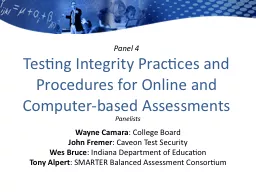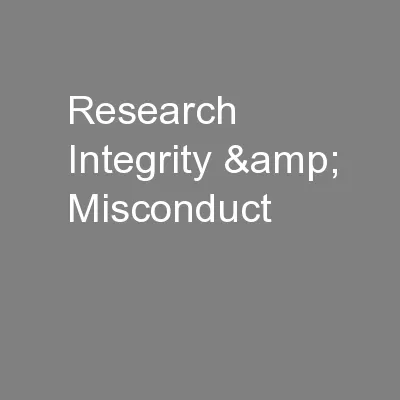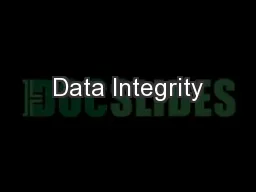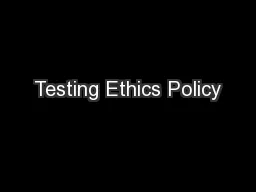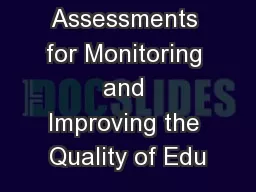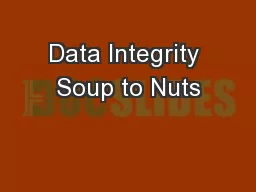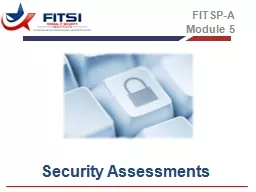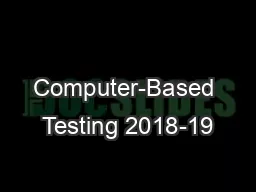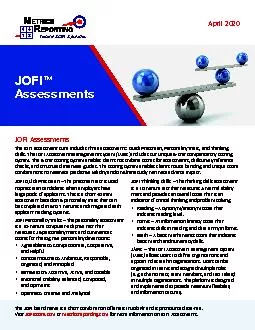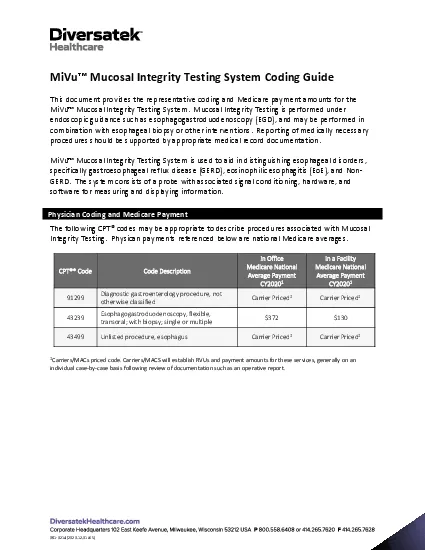PPT-Panel 4 Testing Integrity Practices and Procedures for Online and Computer-based Assessments
Author : myesha-ticknor | Published Date : 2018-03-12
Panelists Wayne Camara College Board John Fremer Caveon Test Security Wes Bruce Indiana Department of Education Tony Alpert SMARTER Balanced Assessment Consortium
Presentation Embed Code
Download Presentation
Download Presentation The PPT/PDF document "Panel 4 Testing Integrity Practices and ..." is the property of its rightful owner. Permission is granted to download and print the materials on this website for personal, non-commercial use only, and to display it on your personal computer provided you do not modify the materials and that you retain all copyright notices contained in the materials. By downloading content from our website, you accept the terms of this agreement.
Panel 4 Testing Integrity Practices and Procedures for Online and Computer-based Assessments: Transcript
Download Rules Of Document
"Panel 4 Testing Integrity Practices and Procedures for Online and Computer-based Assessments"The content belongs to its owner. You may download and print it for personal use, without modification, and keep all copyright notices. By downloading, you agree to these terms.
Related Documents

